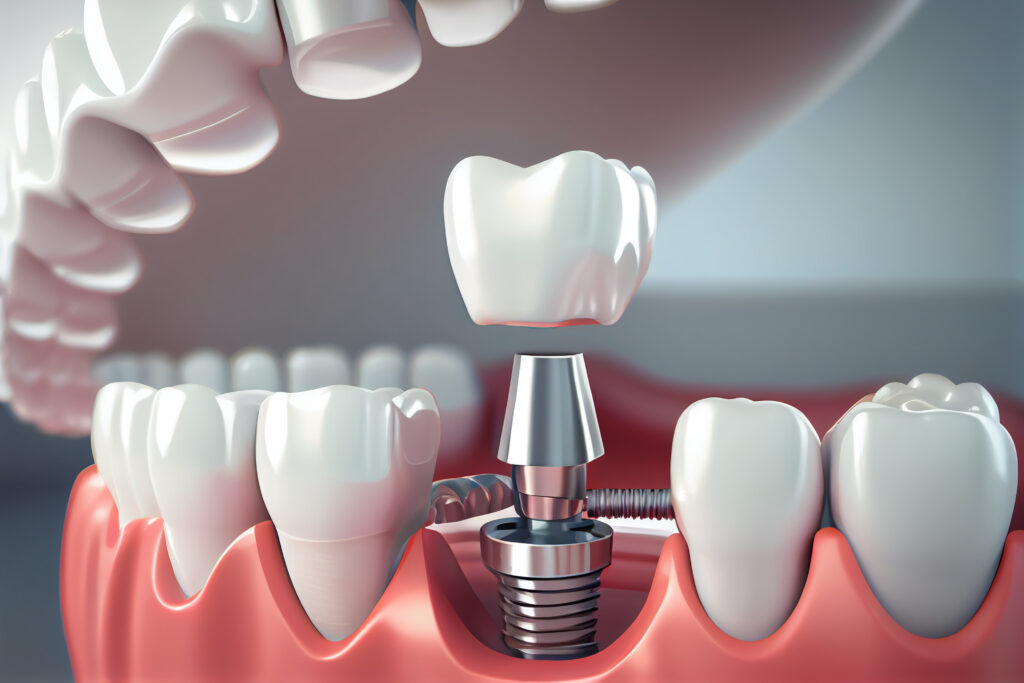Dental Implants Cost Norton Shores MI - Dental Implants: Surgery, Advantages, Risks, & Insurance
Dental Implants Cost Norton Shores MI - Dental Implants: Surgery, Advantages, Risks, & Insurance
Blog Article
Dental Implants And Dentures Muskegon MI - Dental Implants: Surgery, Advantages, Risks, & Insurance
The journey towards dental implants begins with a radical evaluation of the jawbone's condition. When there's insufficient bone density to support an implant, bone grafting becomes a vital procedure to recreate a secure continue reading this basis. Understanding how a lot bone grafting is needed for dental implants tremendously influences the therapy plan, timeline, and total success look at here rate.
The amount of bone grafting required is decided by multiple components, including the extent of bone loss, the implant's size, and the particular location throughout the mouth. In instances of significant bone loss because of periodontal ailments, trauma, or extended tooth loss, more in depth grafting could also be necessary. Conversely, if the bone loss is minimal, a smaller graft might suffice.
Dental Implants Cost Muskegon MI - Learn More About Your Implants Treatment
The evaluation course of sometimes includes imaging research corresponding to X-rays or 3D scans, permitting the dental skilled to visualize the bone structure (Full Mouth Dental Implants Muskegon Heights MI). These photographs assist in figuring out the quality and amount of existing bone. If the bone is deemed inadequate, the dentist will then outline the appropriate grafting procedures
Grafting may be sourced from numerous areas. Autografts, which contain harvesting bone from the patient's personal body, are sometimes deemed the gold standard. These offer wonderful integration with the prevailing bone however include the downside of extra surgery. Other options embody allografts, which use donor bone, and artificial supplies designed to imitate natural bone. Each choice has its own implications on healing and success rates.
After figuring out the mandatory quantity of bone grafting, the dental professional will create a tailored plan for the affected person. This plan could include the timing of bone grafting in relation to the implant placement. In some circumstances, a graft may be performed concurrently with the implant surgery. Alternatively, in additional difficult situations, a separate therapeutic period is indicated.
Healing timelines differ based on the individual's health, the extent of grafting, and the type of graft used. Generally, the healing of a bone graft takes several months earlier than an implant could be placed. During this time, bone regeneration occurs, leading to a secure base for the implant.
Implant Dental Grandville MI - Get Dental Implants
Patients often wonder about the risks associated with bone grafting. While issues corresponding to infection or graft failure are possible, these events are relatively uncommon. Adhering to post-operative care directions and attending follow-up appointments minimize risks and promote healing.
Once the bone has adequately healed, the dentist assesses the graft's success by evaluating the bone density and stability. If every thing appears favorable, the subsequent steps toward putting the dental implant can start. The success of this next step largely hinges on the quality of the bone graft and its integration with the surrounding bone.
Cost considerations play an necessary role in the decision-making process. The expense of bone grafting varies based on materials used, the complexity of the case, and geographic location. It is essential for patients to debate funds upfront to keep away from sudden payments later in the remedy.
Dental Implants Whole Mouth Muskegon Heights MI - Dental Implants - Top Oral Surgeon
Also, patients ought to have practical expectations regarding the timeline and outcomes. Many components can influence how a lot bone grafting is required and its general effectiveness. A collaborative method involving the affected person and the dental group not only ensures readability but additionally enhances the chances of a profitable consequence.

Maintaining good oral hygiene and common dental visits following the process is important. These practices can prevent problems and be certain that both the graft and the implant remain stable over time. The ongoing relationship with a dental professional is essential, particularly in the months following the procedures.
In conclusion, understanding how a lot bone grafting is required for dental implants encompasses a multi-faceted method that considers bone quality, grafting types, therapeutic time, and general affected person health. The balance between achieving the desired aesthetic and practical outcomes while minimizing risks and complications is at the heart of dental implant procedures. The journey could also be extensive, but a well-planned approach maximizes the probabilities for a profitable, long-lasting result in restorative dental work.
- Determining the quantity of bone grafting required for dental implants typically hinges on the preliminary bone density and quantity of the affected person's jawbone.
- Each patient's case is unique; factors corresponding to earlier extractions, periodontal disease, or trauma can influence the necessity for grafting.
- A 3D imaging scan is usually performed to evaluate the precise dimensions of the available bone and inform the grafting strategy.
- The type of dental implant placement—immediate or delayed—may dictate the amount of bone grafting necessary for stability and integration.
- Different types of graft materials, corresponding to autografts, allografts, or artificial options, can impression how much grafting materials is required.
- Assessing the patient's overall health, age, and way of life habits can affect the therapeutic process, influencing graft volume necessities.
- The depth and placement of the implant can necessitate various amounts of graft materials to secure optimum outcomes.
- Successful integration of the dental implant usually depends on sufficient bone density, leading to a tailored grafting method for every particular person.
- Consultation with an oral surgeon will present a clearer estimate of the bone grafting needed primarily based on complete evaluations and imaging results.
- Post-grafting therapeutic time varies; thus, a cautious analysis is essential to determine the ultimate amount of grafting required for successful implantation.undefinedHow much bone grafting is required for dental implants?
Implants Dental Implants Walker MI - Dental Implants - Oral and Maxillofacial Surgery
What is bone grafting and why is it essential for dental implants?undefinedBone grafting is a surgical procedure that provides bone or bone-like material to the jawbone. It is necessary for dental implants when the existing bone is insufficient to support the implant, ensuring stability and long-term success.
How do I know if I want a bone graft for dental implants?undefinedYour dentist or oral surgeon will consider your jawbone by way of x-rays or 3D imaging to discover out its density and volume. If they discover that you just lack enough bone, they may recommend a bone graft earlier than proceeding with the dental implant.
Dental Implants And Dentures Grandville MI - Get Dental Implants
What components influence the quantity of bone grafting needed?undefinedFactors include the scale and site of the implant site, the health and density of present bone, and individual healing capability (Dental Implant Dentures Grand Rapids MI). These components help the dentist determine the appropriate quantity of graft materials wanted
Are there various kinds of bone grafts used for dental implants?undefinedYes, there are several sorts, including autografts (from your own body), allografts (from a donor), xenografts (from animals), and synthetic graft materials. Each sort has unique advantages and can be chosen based mostly on particular person patient needs.
Dental Implant Muskegon MI - Dental Implants: A 5-step plan to restoring your teeth
How long does the bone grafting process take?undefinedThe duration varies based on the complexity of the grafting process and the extent of the area handled. Generally, a bone grafting process can take anyplace from 30 minutes to a couple hours, depending on the precise circumstances.
What is the recovery time after a bone graft for implants?undefinedRecovery instances can differ, but sometimes, preliminary therapeutic might take a number of weeks, while complete integration of the graft with the bone can take several months. Your dentist will present a personalized timeline based in your scenario.

Will I experience pain after the bone grafting procedure?undefinedSome discomfort is common after a bone graft, however it's generally manageable with prescribed pain medicine. Most patients report that pain diminishes significantly within a quantity of days.
Full Mouth Dental Implants Wyoming MI - Dental Implants services
How does bone grafting affect the general dental implant timeline?undefinedBone grafting may lengthen the overall timeline for receiving dental implants, because it requires a healing interval before implants could be positioned. This can add several months to the method but is important for a profitable implant placement.

Are there risks associated with bone grafting for dental implants?undefinedLike any surgical process, bone grafting carries some risks, corresponding to infection, graft failure, or problems related to anesthesia. However, when carried out by an experienced skilled, these risks are usually low.
Can I actually have dental implants placed instantly after a bone graft?undefinedIn many instances, dental implants can't be positioned instantly after a bone graft due to the want for the graft to integrate into the present bone. However, some techniques, like instant loading, may permit for this underneath specific conditions. Your provider will advise you on the greatest choice primarily based on your circumstances.
Report this page